Boise, ID. Makoto Fujimura is a contemporary artist who works in the traditional Japanese technique of Nihonga, a method that involves the extravagant use of precious minerals and rich materials. His artistic work has clearly inspired his cultural philosophy: he exhorts his readers to see culture as a resource to carefully steward and calls artists to understand themselves through a localist ecological metaphor. If culture is a river and artists have had to become carp to survive the toxic sludge of modern life, Fujimura argues that artists should instead seek to be trout, swimming against the cultural stream and demanding by their presence clean cultural waters.
Fujimura identifies the modern emphasis on “efficient production and mass consumption” as well as “hyper-specialization” as the source of our cultural toxicity. His challenge to create and support “beauty for our common life” builds on Roger Scruton’s idea that beauty and utility only seem to conflict, as the beautiful endures while the ugly is actually wasted.
Appreciative of the work of many contemporary artists, Fujimura nonetheless indicts the ugliness of the modern world and its art. Modern artists have too often “created images that visualized trauma, disillusionment, and dehumanization” and have “attempted to counter” that same trauma with “irony or the pure power of expressive gestures.” This seems to Fujimura to be an entirely ineffectual engagement with culture.
In contrast, he argues for a view of culture that emphasizes the soul-nurturing power of beauty and calls us to cultivate ascetic patience in the face of the beautiful. Acknowledging what a hard sell this is in the modern art world that regards beauty and its pursuit as naive and childish, Fujimura invokes his Christian conversion, which centered on a recognition of the beauty of sacrifice in Christ. This then, is the ethic of Culture Care, to build a fertile community of artistic work and appreciation where beauty is demonstrated and seen attentively.
The personal stories Fujimura includes—of experiencing beauty in a bouquet of flowers, of learning to garden and appreciate how life comes from death, and in observations of the history of the Hudson River—are likely to appeal to and perhaps seem rather obvious to the average FPR reader. However, the emphasis he places on the human need for beauty and insight into the cultural importance of privileging beauty should expand our understanding of how and where to live into our communities. It may be easy to appreciate the significance of the farmer, the homemaker, the local minister, the barber.
But is it easy to appreciate the life-and-death importance of nurturing artists in our midst? Is it easy to see and work toward supporting the social, economic, and emotional excess necessary for creation of and recognition of gratuitous beauty? Fujimura exhorts artists to live generatively and generously, but he also calls for an artistic and social vision the sees culture as a generational—and thus costly—investment. Without invoking the eight generations needed to build Notre Dame, Culture Care nevertheless builds a powerful vision of that kind of investment and stability in and for the artist in our little worlds.
Centered between his indictment of the ugliness of the modern world and his explanation of the generativity needed for true social change, Fujimura develops his metaphor for understanding art and artists in community, and especially in Christian community. Using an Old English word—mearcstapa—he builds the image of artists as “border-stalkers.” Crucially, they are both the protectors and informers of culture.
In the epic Beowulf, the border-stalkers are the protectors of Hrothgar’s kingdom. Their work is to identify threats, carry news, and pay attention to what is happening both inside and outside the kingdom. The mearcstapa is probably best understood as Strider from Lord of the Rings: a man who patrols and protects, living in the wild but loving the civilization and eventually ruling it. The mearcstapa is at once a frightening outsider and the key figure in the defense of communal integrity. Frightening for his independence and strength as well as for the evil news he may bring, the mearcstapa is also the only one who can identify the actual threats and opportunities on the borders.
If artists are to be properly valued but also properly understood, this liminal status must be appreciated. Beauty is dangerous. Fujimura’s own art is sufficiently ambiguous to destabilize both Christian expectations of a “message” and modern art expectations of confrontation. “Charis Kairos” is hauntingly beautiful, but absent a caption the viewer is unable to interpret the direction or intent of its beauty. Artists are unpredictable, often showing us what we would rather not see.
The “wild” is beautiful and risky, alternately delighting and destroying the humane. But these are all things the community desperately needs. Secular culture wants to commodify art. Christian culture, especially, wants to control art. Secular and Christian cultures propagandize art. If art and beauty are the way to cultivate and nurture the human soul and the human community, we must understand the nature of the mearcstapa guarding and informing a flourishing ecosystem and lose our fear of the other and the unknown. If truth, beauty, and goodness are truly and mystically related, beauty really is dangerous—but only to evil. Reading Culture Care, and contemplating Makoto Fujimura’s art, I can believe it.
All images from the Four Holy Gospels Frontispieces and used with permission of Makoto Fujimura.

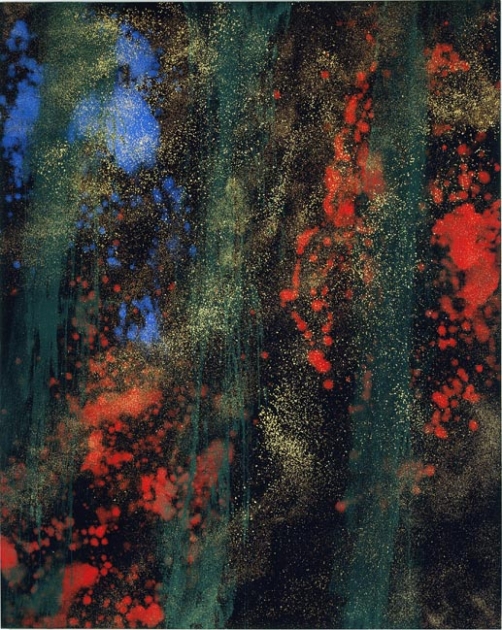

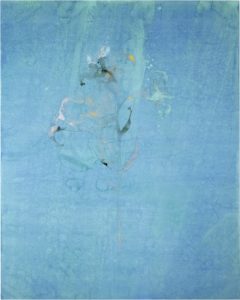
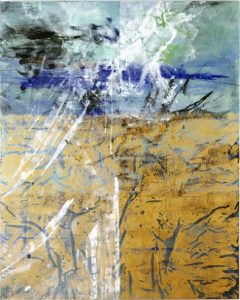
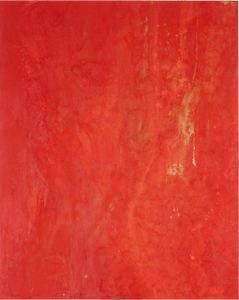
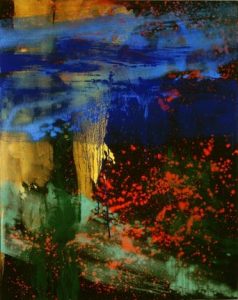


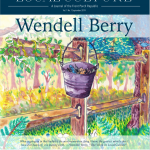


1 comment
Beth Dougherty
Just lovely.
Comments are closed.